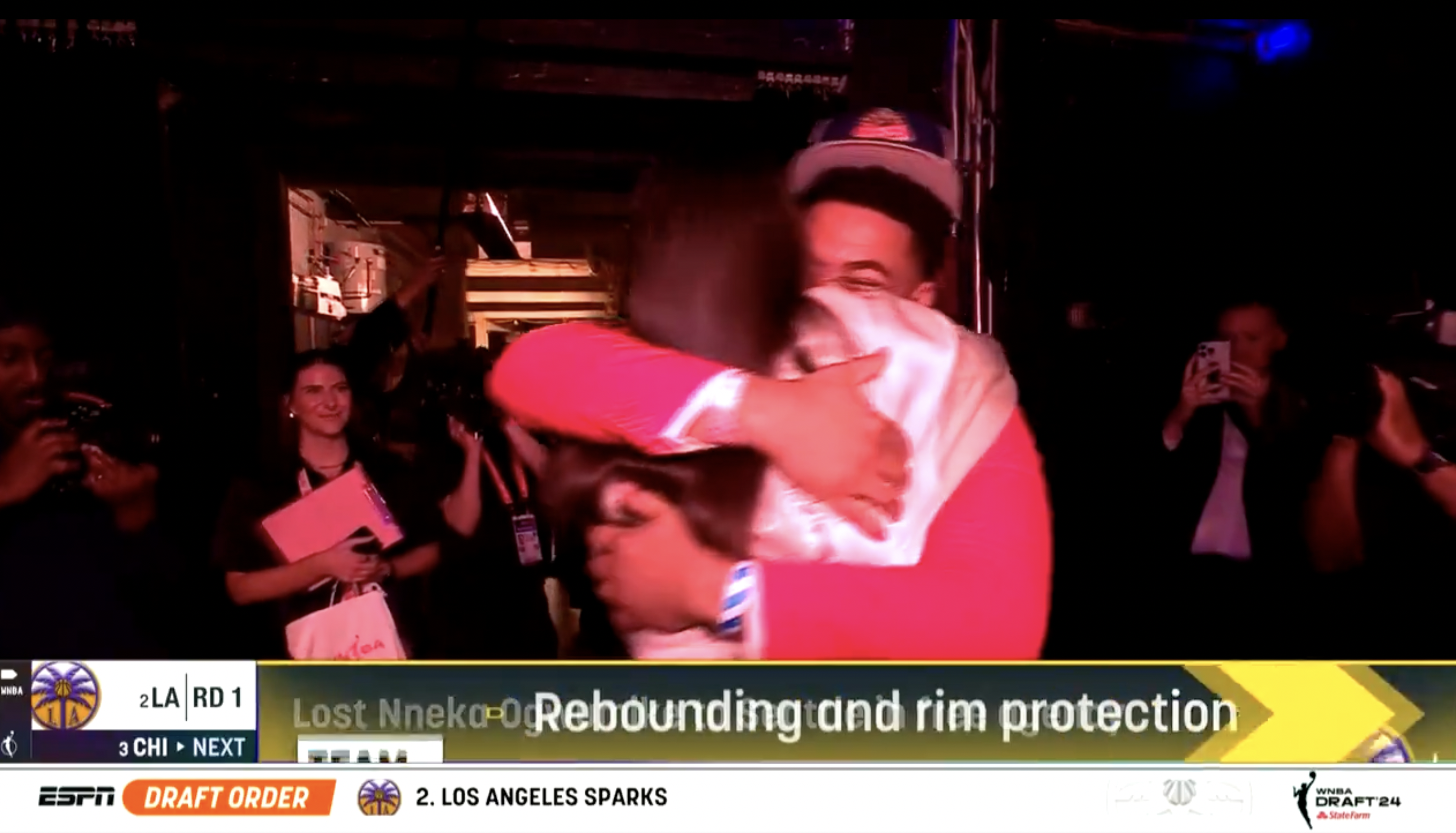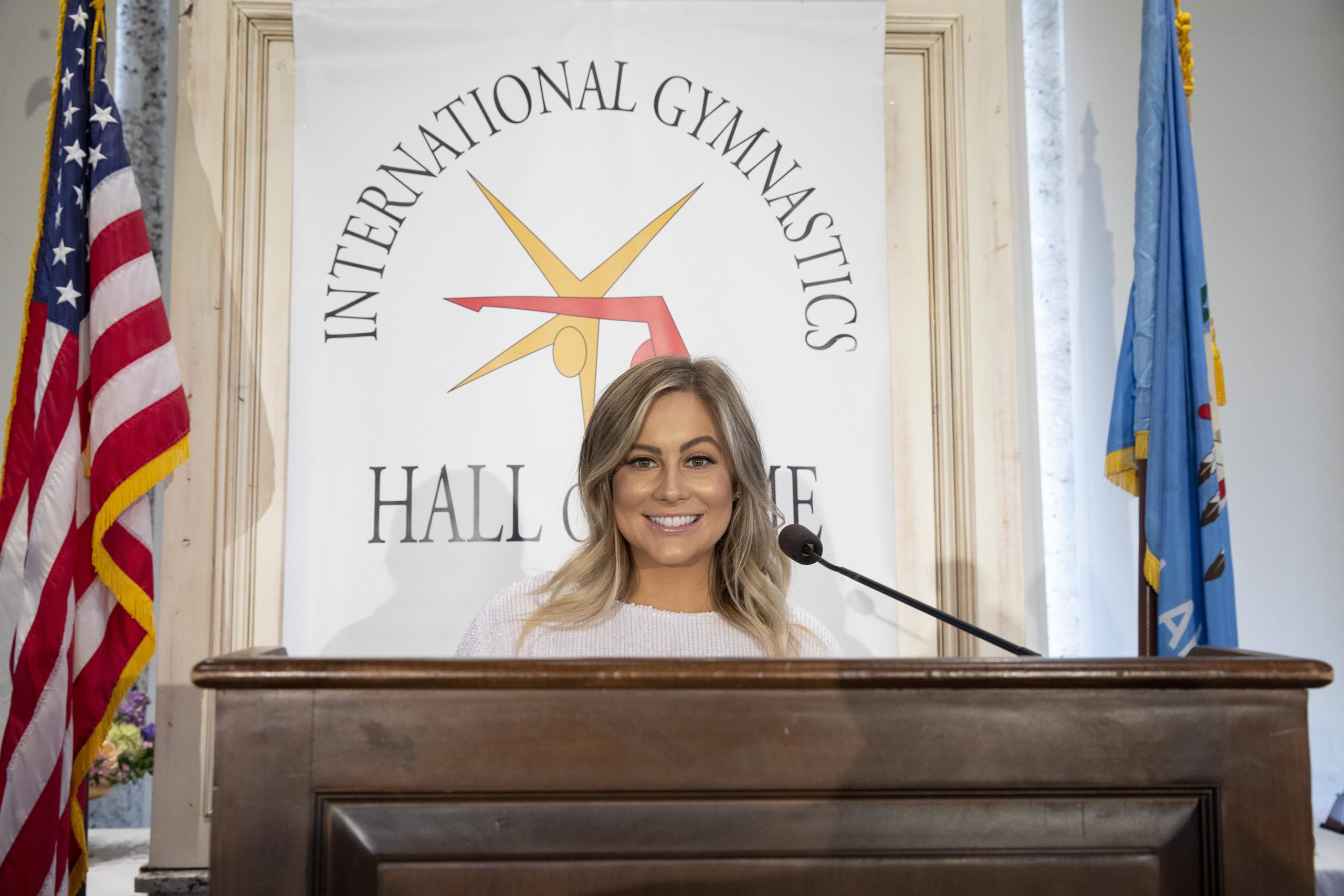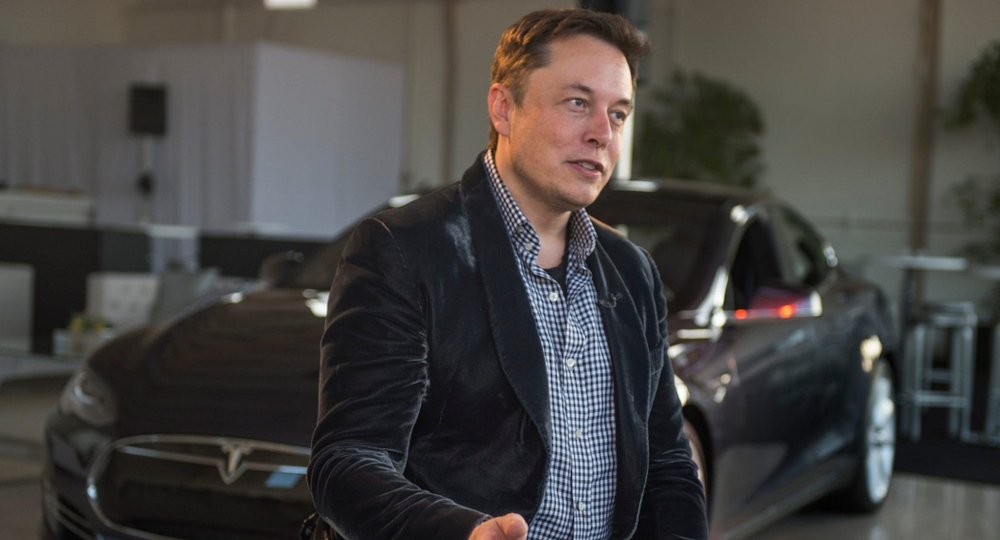Lindsay Czarniak‘s “The Artist and the Athlete” podcast with Sony Music Entertainment is quite the unusual concept, featuring Czarniak (seen above interviewing Juan Pablo Montoya for ESPN) talking to musicians and athletes together for each episode. So far, pairings have included Eddie Vedder and Anthony Rizzo, Alanis Morissette and Danica Patrick, Kirk Franklin and Ray Lewis, Brad Paisley and Clayton Kershaw, Luke Combs and Luke Kuechly, the Avett Brothers and Jimmie Johnson, and this week’s episode, Becky G and Abby Wambach. Czarniak recently spoke to AA about her concept for this podcast, and said it was a long-percolating idea for her.
“It’s something that has been on my mind for a long time because of having musicians cross my path when I was at ESPN, and realizing the process that both athletes and artists have and how much of a connecting point there is there,” Czarniak said. “The idea originally began more than a decade ago when I did one interview (for TNT) with Dale Earnhardt Jr. and Chris Cooley. Chris agreed to go to the racetrack so I could interview him and Dale together, because Dale is a huge Washington sports fan and Chris loves racing.”
“We sat in Dale’s motor coach and did this interview, and there was this energy there that I had never felt before. I made a mental note that it was really something that I wanted to experience more. And what it was about that moment was that I was leading the interview, but they began conversing in such a way that it was obvious they had questions they truly wanted to ask each other, and I could feel this energy that was building up, and it was really cool. I remember at one point Dale was tapping his fingers on the table. So much came out of that, and it was not only ‘Wow, this is so relatable for them,’ but it was also things that I’d never heard them talk about.”
Czarniak said that idea stuck with her through further interviews with athletes, and eventually went to this concept of athletes and musicians given the interest many of them have in each others’ careers.
“Working at different places along the way and having the opportunity to really develop a rapport with athletes through different jobs that I’ve had, whether that was reporting or anchoring those kinds of stories, I would always just make mental notes of ‘Wow, I would love to know this about that person.’ So it just sort of developed from there. And ultimately, it became the idea of ‘It would be really cool to cross those worlds.’ I think athletes a lot of times want to be musicians, and musicians would love to be on the football field, or whatever field it is for the sport they love.”
She said one key to making this work is finding the right athlete and musician pairings, and sometimes that comes from athletes talking to her about who’s really inspired them.
“It is a fine science, and it’s taken a lot of learning as we’ve gone through this. We’ve got a great team, and we’ve figured out a good way to do this. I can’t say that there’s one method, but they all sort of end up where they need to be. One example is with Danica Patrick; I was thinking more, ‘Oh, I want to pair her with a country artist,’ and I had someone in mind, there was someone that seemed logical to me.”
“But Danica ended up sharing that one of her favorite artists of all time was Alanis Morissette. At that point, I thought ‘That’s amazing, but there’s no way in hell we’re going to get Alanis.’ But we took it to Alanis, and right away, she was like ‘I’m in.’ And little did I know that Danica is someone who she considers a strong female who she loves to pay attention to, who she follows.”
“So that became an amazing pairing. It was about much more than just two women that I think have something in common, it was two women who are in very much the same space. And I found in that interview was that they’re from very different backgrounds, but their backgrounds are similar enough because of what they’ve been through. There’s so much that they have in common. They both talked about how they’re unpacking childhood trauma. There was so much that came into that that I hadn’t expected.”
Czarniak said it’s worked the other way around too, with Combs telling her Kuechly was the Panthers’ player who particularly inspires him.
“Sometimes it’s as simple as realizing and knowing that one half of a potential pairing is a huge fan of the other. An example is Luke Combs and Luke Kuechly. Luke Combs is probably the biggest Carolina Panthers fan in country music, but I didn’t know [before reaching out to him about an interview] that Luke Kuechly was like his end-all, be-all. So that made Luke Kuechly easy to target; I’ve covered him and I think he’s fascinating because he’s like a mad scientist. And when we found out that Luke [Combs] was such a fan, we’re like ‘This is going to be epic.'”
Here are some highlights from the Combs and Kuechly episode:
It’s not easy to interview two people from different worlds at once, but Czarniak said the key has been keeping questions to things relevant to both subjects.
“I’ve learned a lot as I’ve done it. It’s one of the big challenges that I’m enjoying right now. It really is a challenge. The way that I’m doing it, what I’ve found is that you really have to stick to ‘Okay, here are the tentpoles that I think are the connectors for these people.’ That’s how I go into it now. Because there are a million questions that I always want to ask Eddie Vedder and Anthony Rizzo individually, but the magic happens when you’re talking with them about what really is this connection, what they want to hear about, what it is that they both find interesting, the common denominator.”
The latest
“Everyone who’s on-air there, or if you’re a producer, you’re supposed to take his seminar. And I fell in love with the way he taught interviewing. When I was at SportsCenter, sometimes it would be hard; his method is much better if you’ve got a long-form scenario like this podcast, but we’d have to whittle down his methods to like, four-minute segments to talk to a star or two big stars. But I remember talking to him a couple of times when I was at SportsCenter and we were interviewing two people together; he had a very specific way of doing it, and that was ‘Do not go down separate lines.’ Because if you do that, it becomes very boring and one person’s left out.”
“So I called him right before I started this podcast, and I was like, ‘John, help me figure this out. I’m about to go to Danica Patrick’s house and Alanis Morrisette is joining us.’ And he gave me his insight and then said ‘Lindsay, I’ve got to tell you, this is a great concept. And this is either going to be a shot out of the park or you’re going to fail miserably.’ And in that moment, I was like ‘That’s why I called him, because he’s going to cut it straight.'”
“He’s exactly right; the really hard thing about this is there are times where I’m like ‘I just want to know why this person wrote this song!’ I could do that and go there, and I will go there, because I do think it’s relevant, and you never know when the athlete’s going to say ‘Oh, I love that song!’ But you do run a risk.”
Czarniak said something else that’s worked during these interviews is doing her own research and using that knowledge to make connections between the subjects.
“It’s a very specific type of interviewing, I’m finding. Sometimes it’s asking them both a question at the same time. It really comes to me on the fly, having to know, obviously, not just what I’m talking about, but knowing the subject matter enough that I can make a connection based on what one of those two people is saying. I know when Luke Combs tells me the greatest thing he’s experienced on stage, Luke Kuechly is probably going to have a moment that’s similar on the field, or maybe I know what that moment is.”
She said this has also been an enjoyable experience just for seeing the different ways these musicians approach storytelling.
“The other thing I love is that singers and songwriters, they’ve got a different mind. They are gifted at what they do for a reason. And sometimes when they’re sharing an answer, I was just like ‘Can you write that song?’ The way they talk is poetic.”
Czarniak said that the group interviews have led to some powerful results, and to the subjects opening up in ways not often seen.
“There are some of these where I’ve come out of them and I sort of want to just sit by myself and cry for a few minutes. Because you feel that people open up in a way, they’re not doing it because they’re talking to me, they’re doing it because they’re having an experience.”
Czarniak said many of the episodes so far have featured that kind of unexpected openness.
“Danica and Alanis was special because they were sharing things about their past that also sort of made me think about myself as a child and put it in perspective. One of my favorite moments was Clayton Kershaw singing at the top of his lungs. I didn’t think that would happen. And Brad Paisley came in, and I know Clayton felt really comfortable with Brad, so he just went there with ‘I Believe I Can Fly.’ And I thought that was pretty amazing; Clayton isn’t really known as being the most open, so that was really cool.”
“And the other one is Eddie Vedder sharing the story about sneaking into Wrigley Field, because when he told that story, watching him emote the way he did when we were on that Zoom call, it was like he was a fanboy. I was watching Eddie Vedder as a kid explain his excitement about the Cubs making it to the World Series.”
The Artist and the Athlete can be found on Apple Podcasts here.







